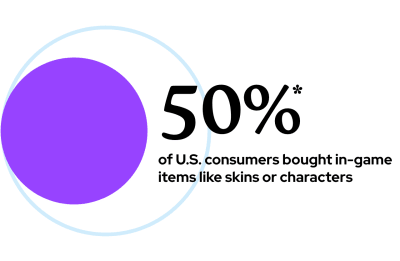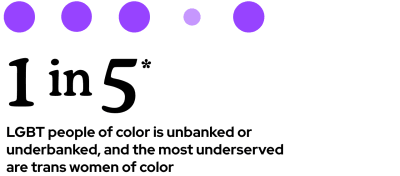Top Trends in 2022 for Financial Services Marketers

A tsunami of cultural and social changes are affecting the financial services industry. As we partner with clients in this competitive space, we’re keeping a close eye on shifting lifestyle priorities, social media power players, and everything in between.
Here are five trends we’re observing and why they should matter to every financial marketer.
- JOMO: Digital has made remote jobs viable and people are flocking to growing cities from Irvine, CA to Ft. Myers, FL. While FOMO (fear of missing out) dominates our lives, people are increasingly embracing the joy of missing out (JOMO), rethinking their fast-paced lives, particularly work, and prioritizing family and leisure. A surprising 54%* of U.S. consumers plan to maintain a slower pace post-COVID. America celebrates hard work, yet progress can be measured at different speeds. Re-assessing target markets, serving relocators, and rethinking what luxury means to diverse audiences is key. Financial brands that cater to go-getters — as well as life in the slow lane — will win out.
Re-assessing target markets, serving relocators, and rethinking what luxury means to diverse audiences is key. Financial brands that care to go-getters – as well as life in the slow lane – will win out.
- Mood-makers: Consumers are caring for their mental health and overall well-being more than ever. Mood-supporting benefits will be as important as cost, impact, or convenience when it comes to choosing products and services. For instance, 59%* of U.S. consumers are interested in monitoring their stress levels throughout the day. New apps that power mood insights and real-time recommendations are increasingly popular. Savvy financial brands are inviting people to browse rewards by desired mood, focusing less on objects and events and more on the feeling they elicit. Even wealth management services can be marketed toward low stress or exhilarating risk, offering portfolio options that resonate on an emotional level.
- Digital proxies: Today, avatars are conveying the style, status, and identity of their human counterparts. In the digital age, people are decluttering physical goods (think Marie Kondo) and buying, trading, and flaunting digital assets like virtual fashion, NFTs, and cryptocurrency. One survey found that 50%* of U.S. consumers bought in-game items (i.e., skins, characters). Soon more advertisers will be shifting from social news feeds to shared experiences in the metaverse. A carmaker like Ferrari won't run ads, they'll offer a virtual test drive as they did in Fortnite. Everything will be more game-like, moving away from likes, comments, and posts toward participation. Smart financial institutions will team up with luxury brands to offer digital rewards like Louis Vuitton’s digital bag or NFT art.

- Fin-fluencers: Young people looking for financial advice are getting it from influencers like Humphrey Yang on TikTok (2.9M followers) or Mrs. Dow Jones on Instagram (240K followers). As $30 trillion in generational wealth gets transferred in the coming decades, its recipients will be influenced more by peers and fin-fluencers than banks. And while Yang and Jones offer a lot of good advice, much of the content on social media is poorly informed and potentially risky. This is a great opportunity for financial brands to fact-check influencers. As more charismatic young “advisors” surface, financial experts can help correct dangerous recommendations (in a light-hearted manner such as TikTok reaction videos) and guide young people toward sound financial decisions.
Customers are curating services that fit their needs and rejecting generic offerings. Where banks lag behind, fintechs are filling the gap.
- LGBTQ+ power: America’s 30M LGBTQ+ spend $1T annually, yet over half struggle to save. One in five LGBT people of color is unbanked or underbanked, and the most underserved are trans women of color. Fintechs like Superbia and Daylight recognize this unmet need. Daylight’s Visa debit card enables preferred rather than legal names, charitable donations, and coaches who are versed in LGBT challenges. Customers are curating services that fit their needs and rejecting generic offerings. Where banks lag behind, fintechs are filling the gap. It takes more than posting rainbows or Pride photos when product offerings such gender transitioning loans are few and far between. Bold financial brands are designing products and services that meet these unique needs.

As you revisit your financial services marketing strategy, ask yourself if it’s addressing these new behaviors. Alternatives to traditional financial services appear almost weekly from fintechs, retailers, and big-tech. To remain relevant, marketers need to design for changing consumer needs.
*Source: Foresight Factory 2021

